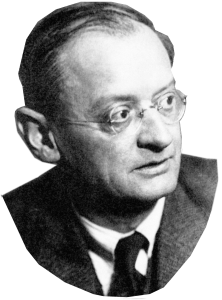Bruno Taut (1880–1937 · chief architect)
Born in 1880 in Königsburg, East Prussia (today Kaliningrad), Taut designed four of Berlin's six World Heritage residential estates: Falkenberg Garden City, the Schillerpark Estate, the Horseshoe Estate and the Carl Legien Housing Estate. In 1909 he founded the architectural practice Taut & Hoffmann, which was joined in 1912 by his younger brother Max. The elder Taut became known not only for Falkenberg, but above all for the glass industry pavilion at the craftsmen's association Deutscher Werkbund's premiere exhibition in Cologne in 1914. After the First World War, he worked from 1921 to 1924 as a municipal building surveyor in Magdeburg. In 1924, Taut returned to Berlin and was appointed chief architect of the newly founded housing association GEHAG. In this role, he decisively shaped the face of New Building and Berlin public housing in the years that followed. A total of around 134,000 apartments were built under his management. His main works include the Horseshoe Estate and the Onkel-Toms-Hütte housing estate in the Berlin-Zehlendorf district. In addition to his practical work, Taut wrote a book of architectural theory, two utopian illustrated books and several other influential publications and appeals. Taut understood like no-one else how to use details and colours in architecture in such a way to prevent affordable mass housing from becoming monotonous. In 1930, Taut became a professor at Berlin’s Technical University (now TU Berlin) and joined influential associations such as the Workers’ Council for Art, the Deutscher Werkbund and the Ring of Ten architectural collective. Persecuted by the National Socialists as a "cultural bolshevist", Taut went into exile in 1933. Although he worked mainly in Japan as a journalist, he was able to complete several prominent buildings in Turkey after 1936. He died from an asthma attack at the age of 58 in his house in Istanbul.

